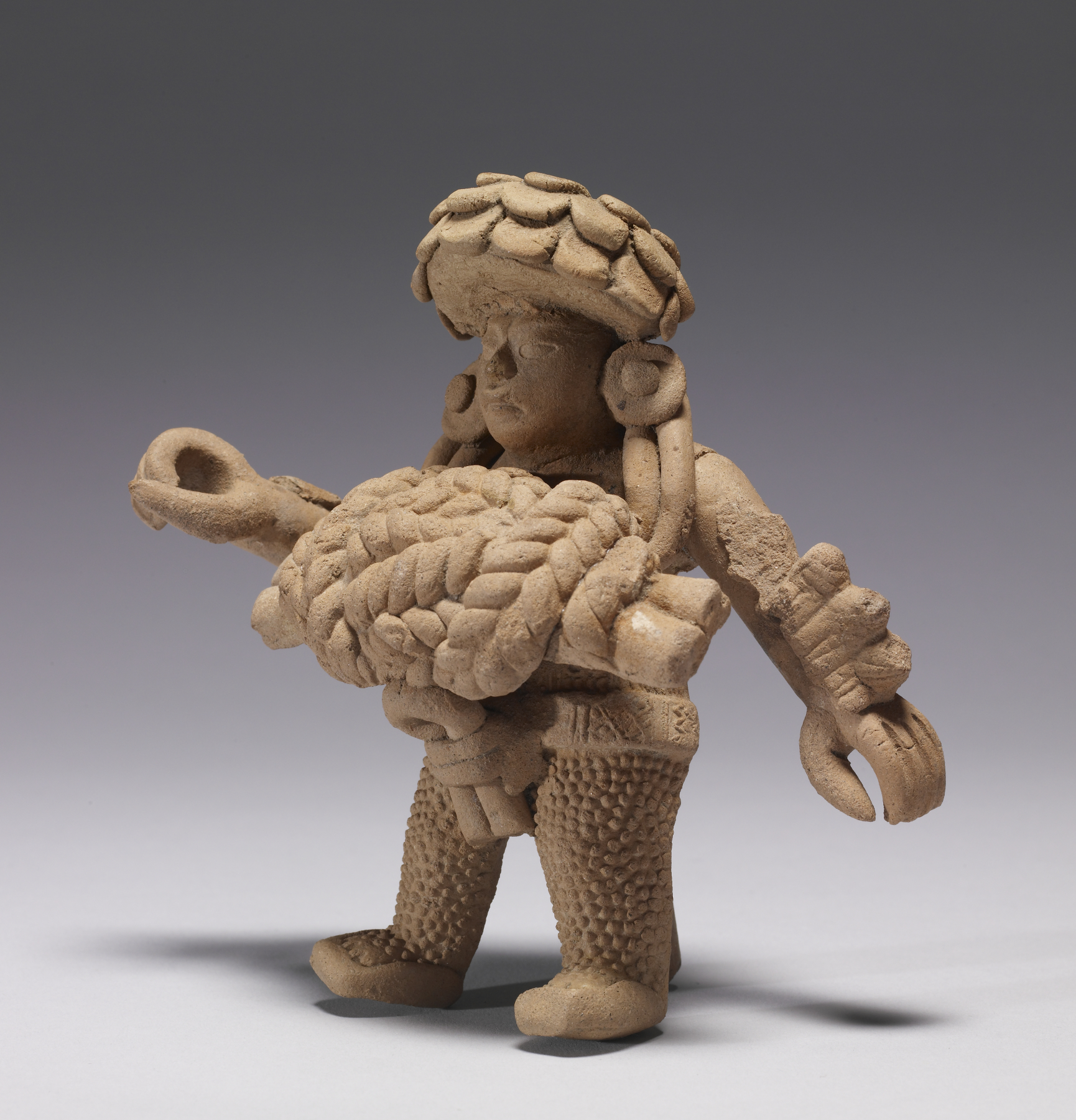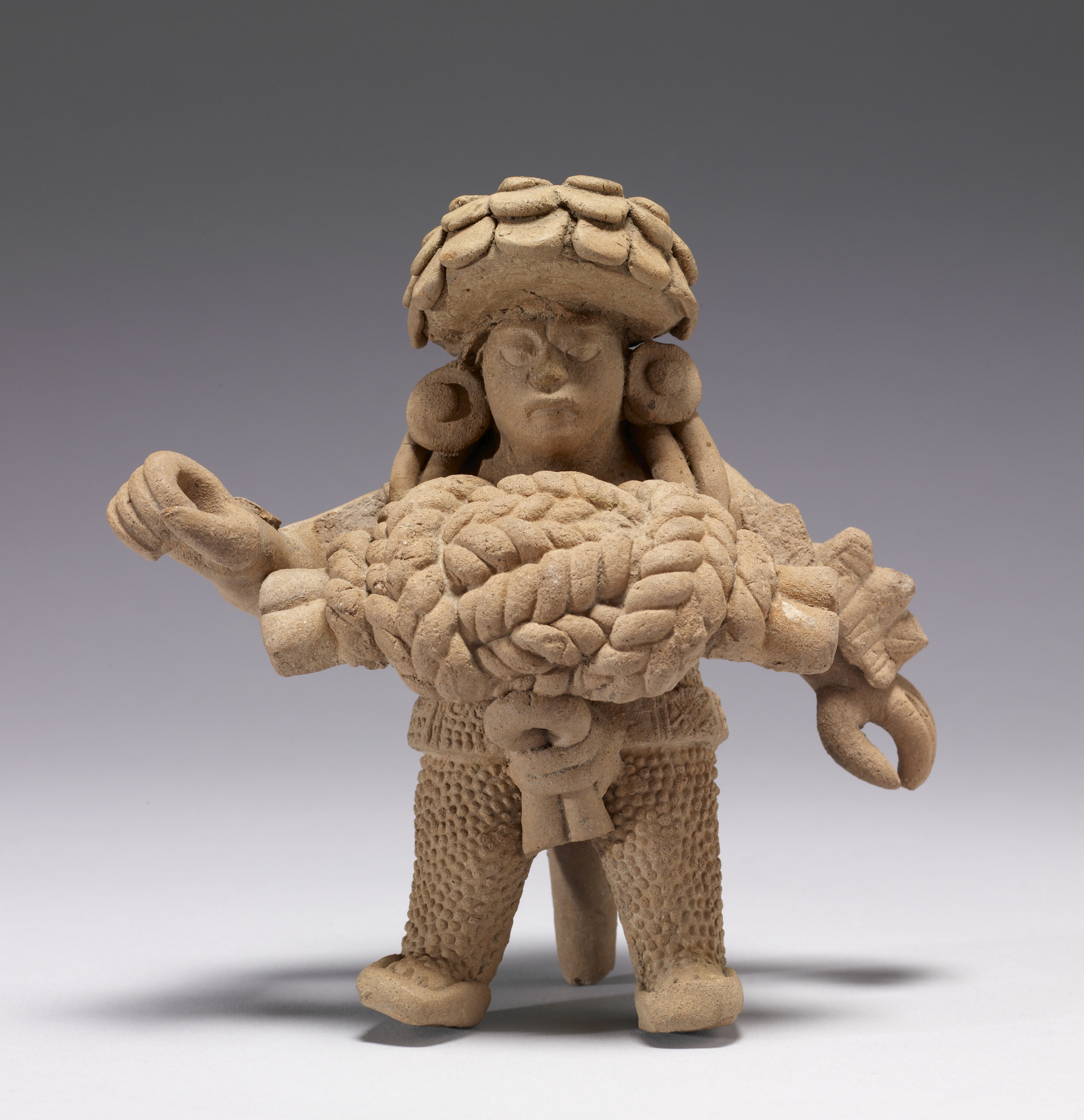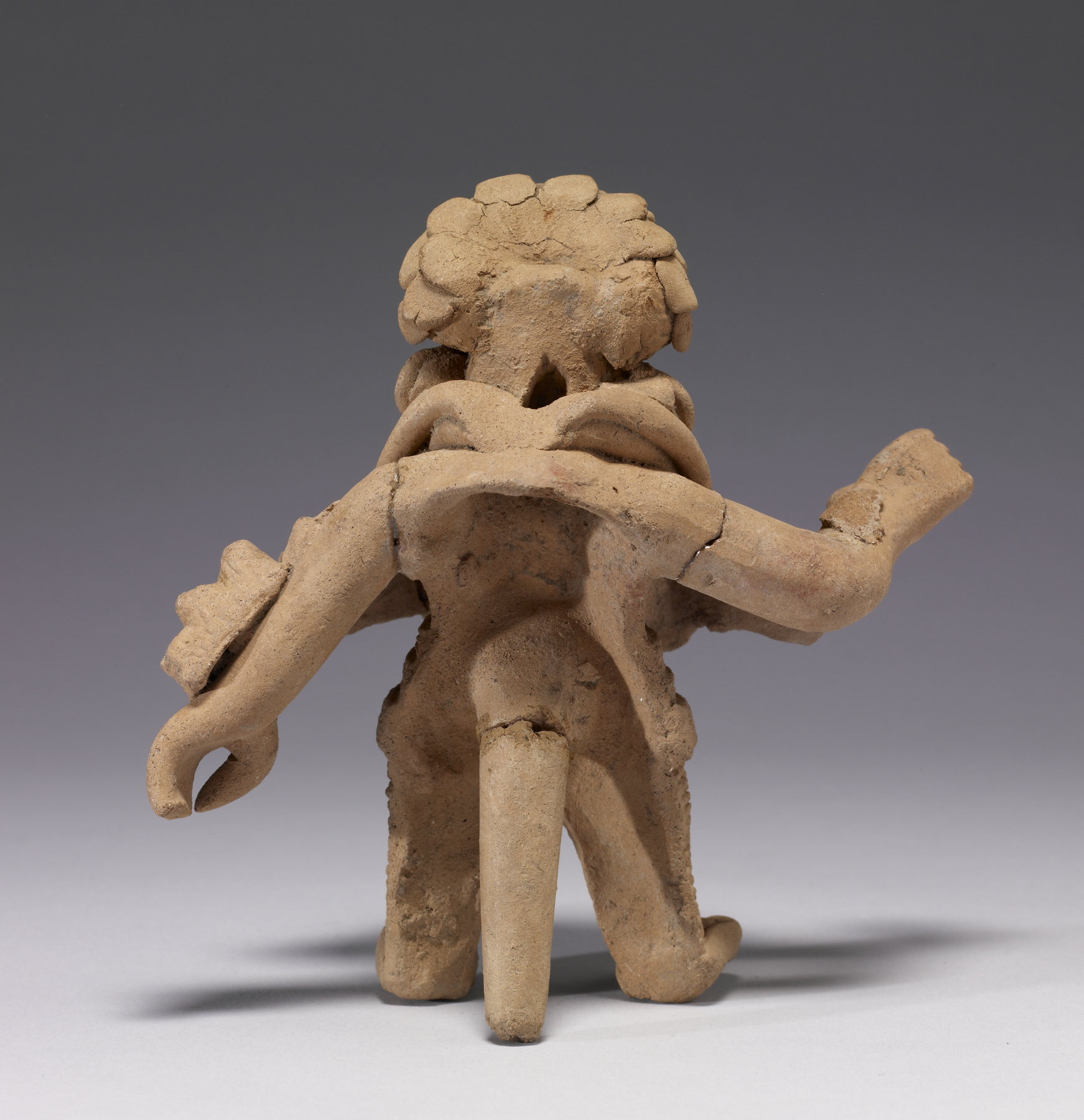Standing Figure with a Tied-Rope Pectoral
(Ancient Americas )
Although several examples of this type of figurine have come to light in recent years, little is known about their function or subject matter. As is typical of the known examples, this piece is made from pressing clay into molds, one each for the body, head, pectoral, and costuming details. The resulting parts are subsequently assembled.
The dotted pattern on the figure's legs is reminiscent of other Mesoamerican renditions of flayed skin, which was occasionally worn in ritual events associated with fertility. Like a seed or an ear of maize, life exists within a dead husk when such a costume was worn, and it thus references the pan-American connection between life and re-birth.
The oversized pectoral, consisting of multiple strands of thick rope, is a common feature to this type of figurine. It has been associated both with rulers and with warriors, yet its meaning remains poorly understood. It is incorporated into Late Classic Maya art at sites nearest to Veracruz, likely reflecting more intensive interaction between these two areas at this time.
Provenance
Provenance (from the French provenir, 'to come from/forth') is the chronology of the ownership, custody, or location of a historical object. Learn more about provenance at the Walters.
David and Bonnie Ross collection, Indiana, by 1988; Thomas D. Slater, until June 2005; Austen-Stokes Ancient Americas Foundation [John Stokes as agent], June 16, 2005, by purchase [Arte Primitivo, New York, as agent]; Walters Art Museum, 2007, by gift.
Geographies
Mexico, Veracruz (Remojadas) (Place of Origin)
Measurements
5 3/4 in. (14.61 cm)
Credit Line
Gift of the Austen-Stokes Ancient Americas Foundation, 2007
Location in Museum
Not on view
Accession Number
In libraries, galleries, museums, and archives, an accession number is a unique identifier assigned to each object in the collection.
In libraries, galleries, museums, and archives, an accession number is a unique identifier assigned to each object in the collection.
48.2782






